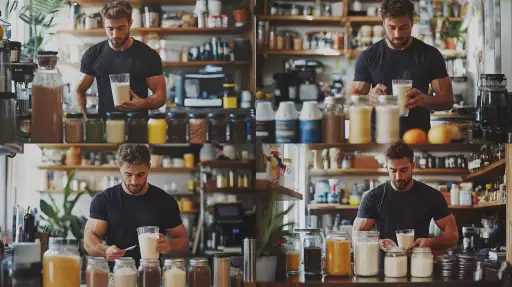Explore the Best AI Image Gallery

Pixels on Your Skin: Exploring the Intersection of AI-Generated Images and Art
The world of art is undergoing a seismic shift, fueled by the rise of artificial intelligence (AI). AI-generated images, once confined to the realm of science fiction, are now a tangible reality, capable of producing stunningly realistic and imaginative visuals. This burgeoning technology is not merely a novelty; it represents a fundamental paradigm shift in how we create, perceive, and interact with art.
A New Canvas: The Impact on the Creative Industry
The advent of AI image generators has undoubtedly disrupted the creative landscape. While some artists express concerns about job displacement and the devaluation of human creativity, others embrace AI as a powerful tool to augment their artistic endeavors.
- Increased Accessibility: AI democratizes art creation by providing tools that are relatively easy to use, even for individuals with limited technical skills.
- Novel Artistic Expressions: Artists can leverage AI to explore unconventional concepts and generate imagery that would be impossible to create manually.
- Efficiency and Speed: AI can expedite the creative process, allowing artists to iterate rapidly and experiment with different ideas.
Beyond Aesthetics: Potential Uses of AI-Generated Images
The applications of AI-generated images extend far beyond the realm of fine art. This technology has the potential to revolutionize various industries:
- Advertising and Marketing: Create personalized, dynamic visuals for targeted campaigns.
- Education and Training: Generate interactive learning materials and simulations.
- Healthcare: Develop realistic medical illustrations and training aids.
- Game Development: Produce immersive environments and characters for video games.
Navigating the Ethical Landscape
The rise of AI-generated images raises several ethical considerations that require careful examination:
- Copyright and Ownership: Who owns the copyright to AI-generated artwork?
- Bias and Representation: AI algorithms can perpetuate existing biases, leading to unfair or inaccurate representations.
- Misinformation and Deepfakes: The potential for creating convincing but false images raises concerns about the spread of misinformation.
Future Trends: The Evolving Landscape of AI-Generated Art
The field of AI-generated art is constantly evolving. We can expect to see:
- Increased Realism and Creativity: Advancements in AI algorithms will result in even more realistic and imaginative imagery.
- Personalized Art Experiences: AI can generate artwork tailored to individual preferences and tastes.
- Interactive and Immersive Art: AI-generated visuals will be integrated into interactive installations and virtual reality experiences.
Conclusion
AI-generated images are transforming the creative landscape, presenting both opportunities and challenges. As this technology continues to evolve, it is crucial for artists, policymakers, and the general public to engage in thoughtful discussions about its impact, ethical implications, and potential for shaping the future of art.
](https://images.ai-img.art/thumbnails/150/f9584153b4cddd8c9fab611dc10247549b275c59bc173251e37d0935874f9deb.webp)













](https://images.ai-img.art/thumbnails/150/bddf3ae4a232290858389b933c866ad3be429ef2e25c23a9f4d7713ed6e44d0b.webp)









](https://images.ai-img.art/thumbnails/150/008b5d5d49667cc2e93a5f8a8adfaa545963da99c39ff0901f5296294636400d.webp)





](https://images.ai-img.art/thumbnails/150/4289d1230b86a96c4d556636c3167bed0ef38f850826549517e4e45db4d87bf7.webp)


](https://images.ai-img.art/thumbnails/150/f67d9af3398150f2ab1bcf250717fea134275e2ca896252b54a4d9bb3719f9ac.webp)

](https://images.ai-img.art/thumbnails/150/c2c9c48b38fae37f0a457b80b084ed01ba803810fc8f488c8f610c03abc74049.webp)





